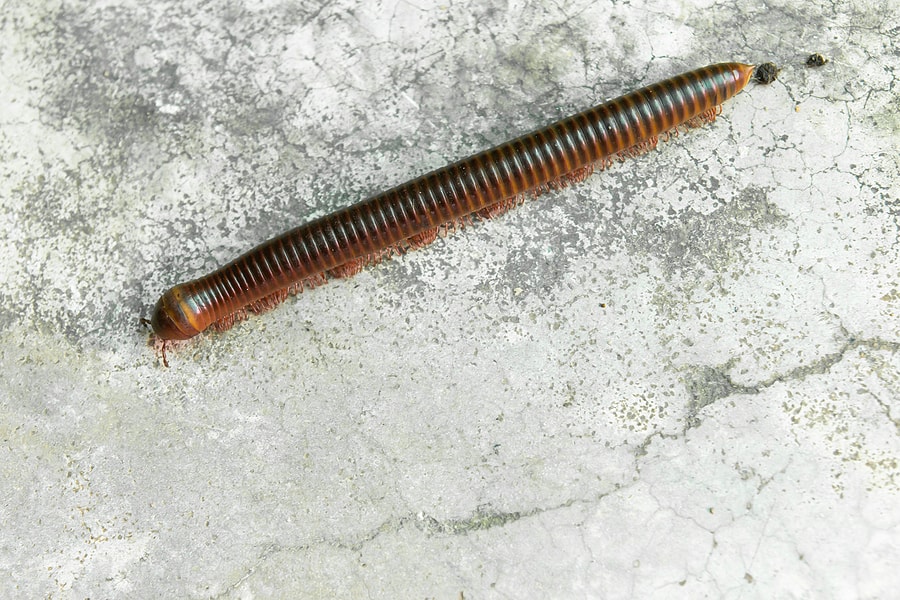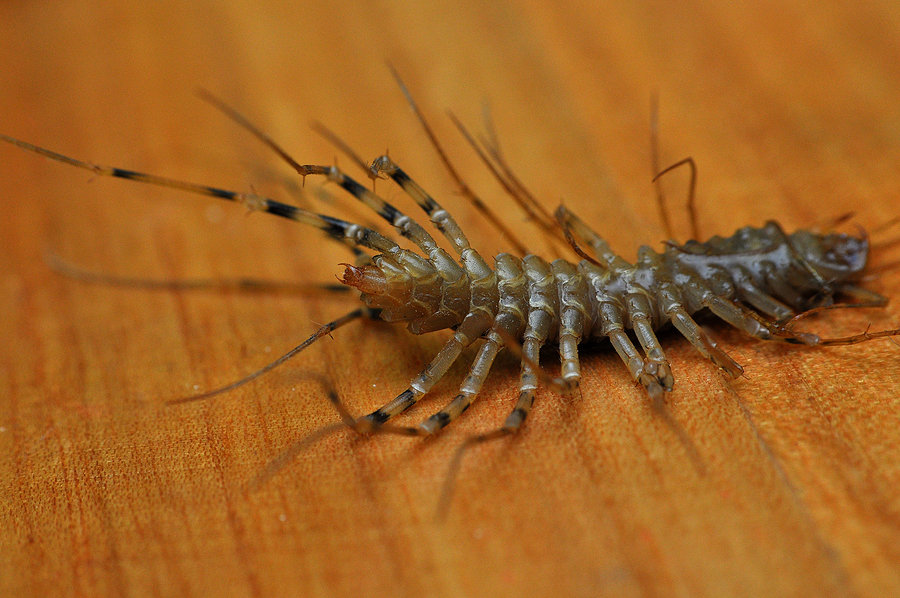READY TO GET STARTED?
REQUEST A FREE ESTIMATE
Fill out the form below or call (888) 466-7849 for a free, no-obligation estimate.

While often mistaken for each other, millipedes and centipedes are distinctly different pests. Although commonly referred to as insects, they are actually not – in fact, they are more closely related to lobsters and shrimp. Centipedes have bodies composed of many segments with one pair of legs on each segment. These long legs extend from the sides of their bodies and trail backwards behind them, making them very visible. Millipedes, on the other hand, are the opposite. These arthropods have only 1 pair of legs on their first 3 body segments but then two pairs of legs for each body segment after those. Their legs are shorter and do not trail behind their bodies like centipedes do.
Both of these land dwelling creatures prefer moist environments with high humidity. Most are nocturnal, as well. While neither carry diseases that can harm humans or pets, they can be a nuisance when they make their way into your home. Centipedes can bite, although this is rare. They do have poison glands and can cause skin irritation when a bite occurs. Millipedes feed on stems and leaves and can cause damage to gardens. They can also leave a stain if crushed. Both species can be a nuisance when they invade your home in large numbers.
Although there is no set season for millipedes and centipedes, they do come out in large numbers twice per year: in the spring when they lay eggs and in the fall when they prepare to overwinter.
Preventing centipedes and millipedes can be accomplished with these tips:
Do I Need Termite Treatments in the Winter?

Centipedes are a type of arthropod often mistaken for their cousins, millipedes. These pests thrive in a diverse array of environments, from the driest deserts to wet, humid forests. Determining whether you have a millipede vs centipede can be tricky. Both creatures have linked segments forming their bodies. Centipedes only have 1 set of legs per body segment and these legs are situated on the sides of their bodies. Millipedes, on the other hand, have 2 sets of legs per body segment and their legs are situated underneath their bodies. Centipedes have flatter bodies while millipedes have rounded bodies. Now that you know how to spot a centipede in your home, what attracts them in the first place?
There are 3 main things that attract centipedes to your home: food, environment, and protection.
Centipedes are nocturnal predators with voracious appetites. They can often be found wandering around at night in search of their next meal. Centipedes consume mostly other insects, including beetles, spiders, roaches, crickets, earthworms, bed bugs, silverfish, moths, flies, pill bugs, and even other centipedes.
To prevent centipedes from coming into your home, keep these other pests away. Routine pest control is a good place to start in keeping their food sources limited.
Different species of centipedes prefer different environments. While many centipedes prefer to live outdoors, others will make their way indoors. Inside your home, they are attracted to cool, dark, damp places that are rarely disturbed. They are attracted to moisture and can often be found near food sources. They like to hide out in cement block walls, boxes, clutter on the floor, floor drains, on or near plants, leaky faucets, leaking hoses, and broken gutters. They can get into your home through drains, holes, cracks, gaps, and poorly sealed doors and windows.
To keep centipedes from making your home theirs, you can eliminate standing water in your yard, fix drips and leaks including faucets and hoses, clean and repair gutters, clean up loose brush and other yard debris, and keep your home cleaned and decluttered, especially in areas that are not disturbed often.
Centipedes are overwintering pests, meaning they cannot survive in cold weather. Instead, they will make their way indoors in search of a warm, heated place to survive the winter months and to reproduce. Because they are attracted to moisture and need it to survive, they will also come indoors during periods of extreme drought in the summer, as well.
Keep centipedes out of your home during any season by sealing any gaps and cracks with caulk, using rubber stoppers on drains, and installing weatherstripping around doors and windows.
If you have a problem with centipedes or any other pests, contact your local pest control company for a thorough evaluation and treatment plan.
You Brought Bed Bugs Home, Now What?
Orb Weavers: What You Need to Know
Rat vs Mouse: What’s the Difference?

Although they are often confused with each other, millipedes and centipedes are two completely different pests. While both are classified as arthropods, the similarities end there. Which one is more dangerous to humans – millipede vs centipede?
Centipedes have bodies composed of many segments with one pair of legs on each segment. These long legs extend from the sides of their bodies and trail backwards behind them, making them very visible. These legs enable centipedes to move very quickly. They also have long antenna. Centipedes do have the capability to bite and are classified as predators, killing and eating their prey.
Millipedes, on the other hand, are the opposite. These arthropods have only 1 pair of legs on their first 3 body segments but then two pairs of legs for each body segment after those. Their legs are shorter and do not trail behind their bodies like centipedes do. These shorter legs make millipedes move much slower than their long-legged counterparts. Millipedes are also unable to bite. They are scavengers and do not kill prey to feed.
So which one is more dangerous? When millipedes are disturbed they will curl into a tight ball similar to a pill bug or “roly poly.” Since they are unable to bite, they emit a foul-smelling fluid that can cause irritation to the skin and eyes of humans if handled. Centipedes, on the other hand, will bite humans on occasion if they are disturbed. A centipede bite is similar to that of a bee sting, leaving behind a red bump that can swell, itch or sting. Despite these defensive mechanisms, neither millipedes nor centipedes are considered dangerous to humans or pets. Neither of these pests are known to transmit diseases or contaminate food, furniture, or plants either.
Although they aren’t considered harmful to humans, we still tend to be a little leery of their presence. You can prevent millipedes and centipedes by:
If you have a problem with millipedes or centipedes, contact your local pest control company who can help identify which of these pests you have, as well as help identify how they are getting into your home and the best method to eliminate them and prevent them from returning.
Avoiding Stinging Pests at Your Business
Controlling Birds During the Summer Months